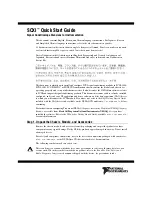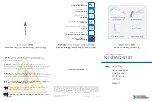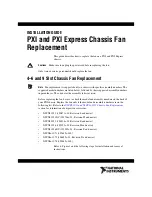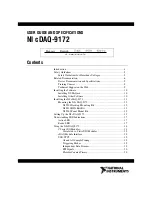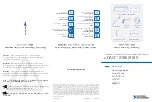
1-6
Cisco ASA Series CLI Configuration Guide
Chapter 1 Completing Interface Configuration (Routed Mode)
Default Settings
VLAN ID Guidelines for the ASASM
You can add any VLAN ID to the configuration, but only VLANs that are assigned to the ASA by the
switch can pass traffic. To view all VLANs assigned to the ASA, use the
show vlan
command.
If you add an interface for a VLAN that is not yet assigned to the ASA by the switch, the interface will
be in the down state. When you assign the VLAN to the ASA, the interface changes to an up state. See
the
show interface
command for more information about interface states.
Default Settings
This section lists default settings for interfaces if you do not have a factory default configuration. For
information about the factory default configurations, see the
“Factory Default Configurations” section
.
Default Security Level
The default security level is 0. If you name an interface “inside” and you do not set the security level
explicitly, then the ASA sets the security level to 100.
Note
If you change the security level of an interface, and you do not want to wait for existing connections to
time out before the new security information is used, you can clear the connections using the
clear local-host
command.
Default State of Interfaces for the ASASM
•
In single mode or in the system execution space, VLAN interfaces are enabled by default.
•
In multiple context mode, all allocated interfaces are enabled by default, no matter what the state of
the interface is in the system execution space. However, for traffic to pass through the interface, the
interface also has to be enabled in the system execution space. If you shut down an interface in the
system execution space, then that interface is down in all contexts that share it.
Jumbo Frame Support
By default, the ASASM supports jumbo frames. Just configure the MTU for the desired packet size
according to the
“Configuring the MAC Address and MTU” section on page 1-10
Completing Interface Configuration in Routed Mode
This section includes the following topics:
•
Task Flow for Completing Interface Configuration, page 1-7
•
Configuring General Interface Parameters, page 1-7
•
Configuring the MAC Address and MTU, page 1-10
•
Configuring IPv6 Addressing, page 1-12
•
Summary of Contents for 5505 - ASA Firewall Edition Bundle
Page 28: ...Glossary GL 24 Cisco ASA Series CLI Configuration Guide ...
Page 61: ...P A R T 1 Getting Started with the ASA ...
Page 62: ......
Page 219: ...P A R T 2 Configuring High Availability and Scalability ...
Page 220: ......
Page 403: ...P A R T 2 Configuring Interfaces ...
Page 404: ......
Page 499: ...P A R T 2 Configuring Basic Settings ...
Page 500: ......
Page 533: ...P A R T 2 Configuring Objects and Access Lists ...
Page 534: ......
Page 601: ...P A R T 2 Configuring IP Routing ...
Page 602: ......
Page 745: ...P A R T 2 Configuring Network Address Translation ...
Page 746: ......
Page 845: ...P A R T 2 Configuring AAA Servers and the Local Database ...
Page 846: ......
Page 981: ...P A R T 2 Configuring Access Control ...
Page 982: ......
Page 1061: ...P A R T 2 Configuring Service Policies Using the Modular Policy Framework ...
Page 1062: ......
Page 1093: ...P A R T 2 Configuring Application Inspection ...
Page 1094: ......
Page 1191: ...P A R T 2 Configuring Unified Communications ...
Page 1192: ......
Page 1333: ...P A R T 2 Configuring Connection Settings and QoS ...
Page 1334: ......
Page 1379: ...P A R T 2 Configuring Advanced Network Protection ...
Page 1380: ......
Page 1475: ...P A R T 2 Configuring Modules ...
Page 1476: ......
Page 1549: ...P A R T 2 Configuring VPN ...
Page 1550: ......
Page 1965: ...P A R T 2 Configuring Logging SNMP and Smart Call Home ...
Page 1966: ......
Page 2059: ...P A R T 2 System Administration ...
Page 2060: ......
Page 2098: ...1 8 Cisco ASA Series CLI Configuration Guide Chapter 1 Troubleshooting Viewing the Coredump ...
Page 2099: ...P A R T 2 Reference ...
Page 2100: ......































